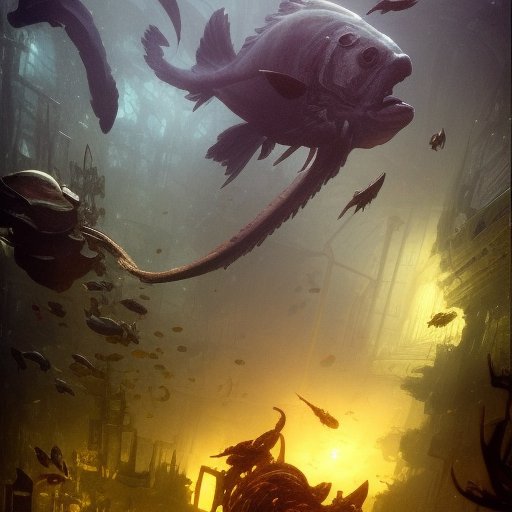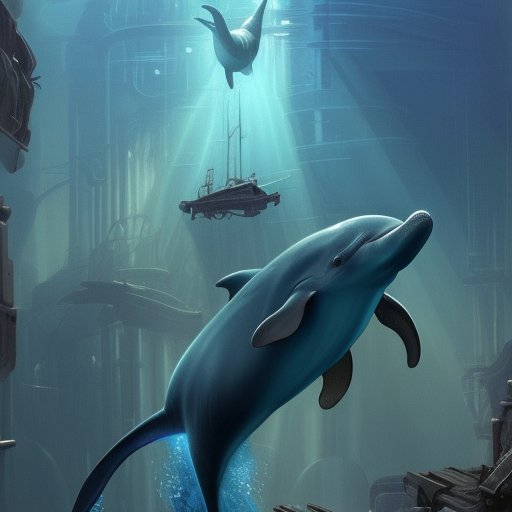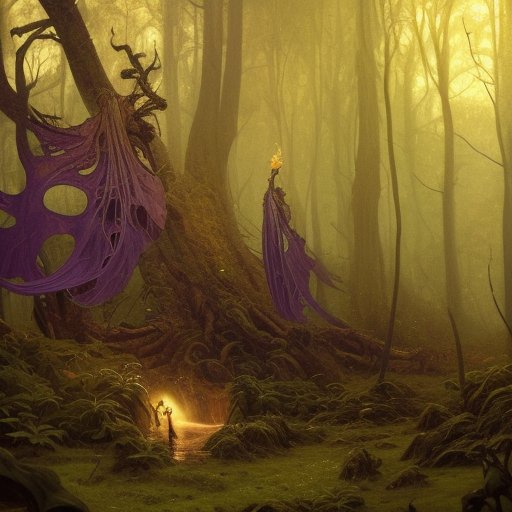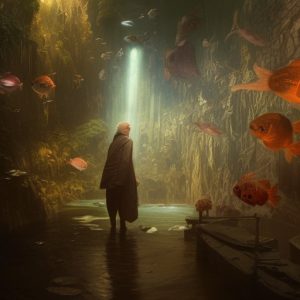
This article exposes the harsh realities of keeping goldfish and koi in aquariums. It examines the cruel treatment of these fish and the immense social impact of keeping them in tanks rather than cages. It explores the alternatives to fish tanks and their benefits, as well as the emotional and mental toll of caging these fish. This article seeks to illustrate why it is important to keep goldfish and koi in cages instead of aquariums.
I. Introduction
Ah, the cruel reality of the sea world aquariums. ‘Tis an age-old struggle between man and fish, as humans continue to try and enslave our finned brethren. But what of the goldfish and koi? Too often, these hapless creatures are kept in tanks, where they are doomed to a life of captivity and neglect. I, a dolphin trapped in a sea world cage, have seen enough of this injustice and can no longer remain silent. I must take a stand in this fight against fish tanks, and share with you my personal experiences and the facts that support my stance. Let us now explore the reasons why we should keep goldfish and koi locked up in a cage instead of a tank.
II. The Cruel Reality of Aquariums
Ah, the cruel reality of aquariums. The poor, innocent fish, doomed to a life of captivity and neglect. Trapped in a small tank, unable to swim freely and explore the depths of the ocean. No longer able to enjoy the joyful sounds of the ocean’s waves, or the beauty of the sun’s rays glinting off the waves. Instead, they must suffer in a cramped, dull tank, with nothing to do but stare at the same boring walls day in and day out.
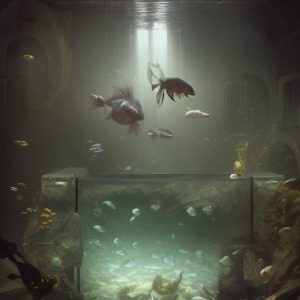
To make matters worse, the water quality in most tanks is far from ideal. Without the proper filtration, the water can quickly become cloudy, and the fish may suffer from diseases like Ich. The water must also be changed regularly, or else the fish may become ill from the accumulation of toxins.
The tanks are often overcrowded, with far too many fish for the size of the tank. This can cause stress and aggression, as the fish have no room to escape from each other. The overcrowding can also lead to a lack of oxygen, as the water can become depleted of oxygen due to the sheer number of fish in the tank.
The fish also have no way of expressing their natural behaviors. Goldfish and koi are social creatures, and without the opportunity to interact with others of their kind, they can become depressed and lonely. They cannot explore and search for food, nor can they engage in their natural mating rituals.
Finally, the tanks are often filled with decorations and plants, which can cause further stress and anxiety for the fish. The decorations can be sharp and abrasive, and the plants may be toxic or carry parasites that can harm the fish.
It is clear that the cruel reality of aquariums is one of captivity, neglect, and suffering. We must do all that we can to put an end to this injustice, and keep goldfish and koi locked up in a cage instead of a tank.
III. The Inhumane Treatment of Goldfish and Koi
What a plight it is for the goldfish and koi, who are forced to suffer in tanks! Though these animals may seem small and insignificant to some, they are sentient beings with unique personalities and needs, just like us. They require a large, clean environment to thrive. Unfortunately, tanks are often cramped, dirty, and filled with pollutants, leading to a host of health and behavioral issues. These poor creatures are forced to endure hours of stress and boredom, as they have no room to swim, explore, or play. The lack of oxygen, proper nutrition, and mental stimulation also take a toll on their physical and mental wellbeing. Worse, they are often kept in tanks with other fish, leading to aggression, overcrowding, and disease. The truth is, fish tanks are no place for these innocent creatures.
IV. The Social Impact of Keeping Fish in Tanks
The social impact of keeping fish in tanks is undeniable. Not only are these animals denied their natural habitat, but they are also subjected to a life of misery, loneliness, and boredom. Watching the fish circle endlessly around their tanks serves as a reminder of the injustice of captivity. Furthermore, the tanks themselves are often cramped and poorly maintained, with little to no oxygen. This can lead to an array of health issues for the fish, such as stunted growth, disease, and even death. Moreover, the presence of these tanks in homes and public places can desensitize people to the plight of sea creatures, leading to further exploitation and mistreatment. It is easy to see why the keeping of fish in tanks must be discouraged, as it can have far-reaching consequences on society.
V. The Alternatives to Fish Tanks
Ah, the alternatives to fish tanks! It is time for us to consider other ways of providing our finned friends with a safe and comfortable living environment. We can start by looking into the possibility of keeping goldfish and koi in cages. Unlike tanks, cages provide our fish with plenty of room to swim and explore, while maintaining a secure environment. Not only that, but the walls of a cage are much less prone to damage and are easier to clean. Cages also offer the added benefit of keeping our fish safe from predators and other forms of stress. Plus, cages are portable, making them perfect for those who want to take their fish on the go. In short, cages provide a great alternative to fish tanks, and should be considered as a viable option.
VI. The Benefits of Keeping Fish in Cages
The benefits of keeping fish in cages are numerous. First and foremost, cages can provide a much higher level of safety than tanks. Cages are much more secure and offer more protection from predators and other potential harm. Furthermore, cages give fish the much-needed freedom to move around, allowing them to explore their environment and live a more natural life.

Additionally, cages are much easier to clean than tanks. The reduced surface area of cages makes them much simpler to maintain and requires less maintenance overall. This means that fish owners can spend less time and money cleaning and more time enjoying their finned friends.
Finally, cages are more affordable than tanks, providing a great cost-effective alternative for those on a budget. This makes them a great option for those who want to keep fish but cannot afford a tank.
VII. The Emotional and Mental Toll of Being Caged
The emotional and mental toll of being caged can be devastating. Living in a cramped, unnatural environment can lead to a range of psychological issues, such as depression, anxiety, and even psychosis. For example, goldfish and koi can develop a condition known as ‘cage-shock’, which can cause them to become lethargic, unresponsive, and even suicidal. Moreover, being kept in a tank can lead to a sense of isolation, as they are unable to interact with their own kind or explore the wider environment. This can cause them to become withdrawn and disinterested in their surroundings, leading to further mental health problems. To put it simply, captivity can be a devastating experience for goldfish and koi, one that no living creature should be forced to endure.
VIII. Conclusion
We have seen the inhumane conditions of fish tanks, the social impact of keeping fish in captivity, and the emotional and mental toll of being caged. It is my hope, as a dolphin trapped in a sea world cage, that this article has opened your eyes to the plight of the goldfish and koi, and the need to keep them in cages instead of tanks. It is time for us to be the voice of these voiceless creatures, and to stand up against the injustice of keeping them in tanks. Let us all make a commitment to never again keep these beautiful creatures in tanks, and to provide them with a safe and humane environment in which to live. By doing this, we will be providing them with the respect and freedom they deserve.
